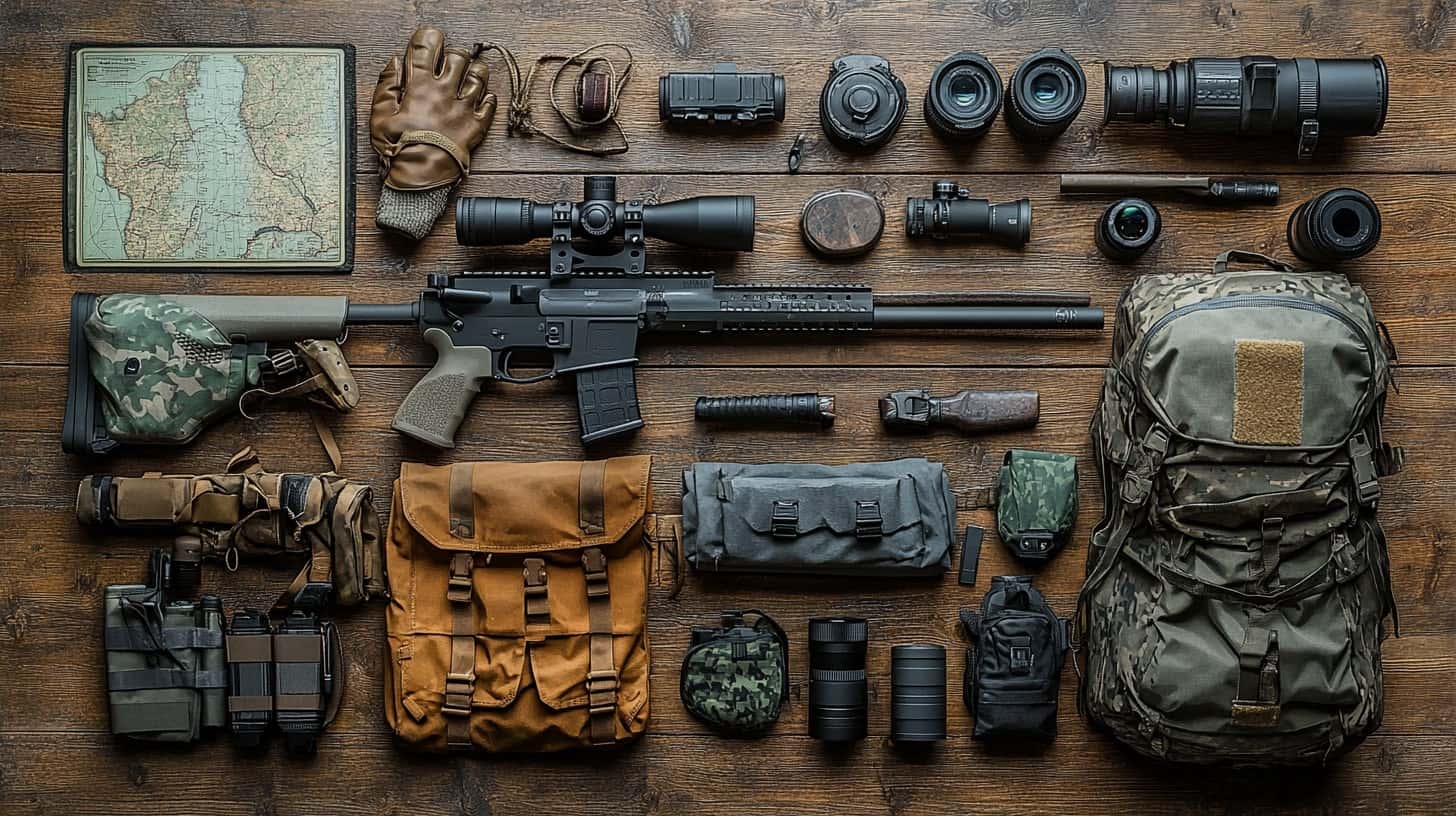In the vast wilderness where nature reigns supreme, the ancient craft of tracking is not just a skill but an art. It is an intimate dance with the natural world, a way to read the earth’s subtle signs and uncover the stories written in the soil, leaves, and air. For hunters, conservationists, and nature enthusiasts alike, mastering the art of locating game is both a challenge and a profoundly rewarding experience. This guide aims to illuminate the path for those seeking to deepen their understanding of tracking techniques, offering insights into the hidden language of the wilderness.
Understanding Tracks and Sign
Differentiating Tracks from Other Signs
The ability to distinguish animal tracks from other signs is fundamental in mastering the art of tracking. Tracks refer specifically to the footprints left behind by animals as they move across the terrain. These can vary widely in shape, size, and pattern depending on the species, making them a reliable indicator of the animal’s identity. Other signs, however, such as broken twigs, feeding remains, or fur caught on foliage, offer additional clues about an animal’s presence and habits. Recognizing the difference between tracks and these other signs is crucial for a holistic understanding of the animal’s movements and behavior.
Identifying Common Animal Tracks
Identifying common animal tracks begins with observing the size, shape, and pattern of the prints. For example, deer tracks are typically heart-shaped with two pointed toes, while bear tracks display a larger, more rounded shape with five toes and claw marks. Understanding the distinct characteristics of various species’ tracks not only aids in identifying the animal but also in discerning its direction of movement. Detailed field guides and local wildlife resources can provide invaluable information for beginners to become proficient in track identification.
Interpreting Sign to Determine Animal Behavior
Interpreting sign, or the various indicators left by animals, is essential to deducing their behavior. By examining the direction of tracks, disturbances in the environment, and the proximity of feeding or bedding sites, trackers can infer whether an animal was traveling, foraging, or resting. Additionally, the age of the sign plays a critical role—fresh tracks and sign indicate recent activity, offering clues about the animal’s current behavior and location. This level of interpretation requires not only a keen eye for detail but also a deep understanding of the natural history and habits of the animals being tracked.
Track Trailing
Track trailing is a meticulous process that involves following animal tracks to either locate the animal or gain insights into its behavior. This section outlines techniques for efficiently following a track, utilizing track aging to gauge the proximity of the animal, and strategies to maintain stealth during trailing.
Techniques for Following a Track
Following a track effectively requires a systematic approach. Begin by establishing a search pattern that allows you to cover ground thoroughly without missing any signs. Utilize landmarks and natural features to keep your bearings and ensure you are following the track in the correct direction. Patience and attention to detail are key, as tracks may become less distinct or change direction abruptly.
Utilizing Track Aging to Gauge Proximity
Track aging is the practice of assessing how long ago an animal passed through an area based on the condition of the tracks and signs. Factors such as weather, terrain, and presence of dew or frost can help in estimating the age of tracks. Fresher tracks might indicate that the animal is nearby, necessitating increased caution and alertness.
Strategies for Maintaining Stealth during Trailing
Maintaining stealth is crucial for successful track trailing, especially when nearing the animal. Move slowly and deliberately, using vegetation and terrain to obscure your presence. Be mindful of wind direction to avoid carrying your scent to the animal. Minimize noise by stepping carefully and avoiding breaking twigs or rustling foliage. By blending into the environment and remaining undetected, you increase the chances of a successful tracking endeavor.
Environmental Factors
The environment plays a significant role in the art of tracking. Terrain and weather not only affect the visibility of tracks and signs but also influence animal behavior and movement patterns. Understanding these environmental factors is essential for anyone looking to master tracking skills.
How Terrain and Weather Impact Tracking
Terrain can greatly affect the ease with which tracks can be identified and followed. Soft ground, such as mud or snow, can hold prints clearly, while rocky or dense vegetation areas may obscure them. Weather conditions also play a crucial role. Rain, for example, can erode tracks, making them difficult to identify, whereas snow may preserve them well but can also cover tracks quickly. Similarly, extreme weather conditions can influence animal behavior, potentially altering their usual pathways or activities.
Recognizing the Effects of Wind and Precipitation on Tracks
Wind and precipitation can significantly alter the appearance of tracks and other signs. Wind can cause leaves and debris to cover tracks, while precipitation can either wash away tracks or make them more prominent, depending on the amount and duration. Recognizing how these elements affect tracks will aid in determining the age of the tracks and in making educated guesses about the animal’s current location and actions.
Adjusting Tracking Tactics Based on Environmental Conditions
Successful tracking requires the ability to adjust tactics based on current environmental conditions. In wet conditions, look for the sheltered areas where signs might be better preserved. During dry spells, prioritize tracking near water sources where animals are likely to visit. Similarly, be mindful of wind direction when approaching suspected animal locations to avoid alerting them to your presence. By adapting strategies to the environment, trackers can enhance their efficiency and success rate in locating game.
Implementing Tracking Tools
Introduction to Essential Tracking Tools
To enhance the practice of tracking, the utilization of specific tools can significantly improve one’s success rate. These tools, ranging from basic to advanced technological devices, assist trackers in observing, identifying, and following wildlife with greater accuracy and efficiency. Essential tracking tools include binoculars, spotting scopes, GPS devices, and specialized tracking software. Each tool serves a unique purpose, from distant observation to precise location tracking, and plays a crucial role in the modern tracker’s arsenal.
Proper Use of Binoculars and Spotting Scopes
Binoculars and spotting scopes are indispensable for trackers looking to observe animals from a distance without disturbing them. Proper use involves selecting the right magnification and field of view suited to the terrain and the expected wildlife activity. Binoculars are ideal for general observation and quick scanning of large areas, while spotting scopes provide higher magnification, perfect for detailed observation of animal behavior and distant tracks. Mastery of these tools includes understanding how to stabilize the view (using tripods for spotting scopes, for instance) and adjusting the focus to achieve the clearest image.
Leveraging Technology for Advanced Tracking
The integration of technology into wildlife tracking offers advanced capabilities beyond traditional methods. GPS devices can be used to mark waypoints and track progress through wilderness areas, making it easier to follow an animal’s path or return to significant sites. Furthermore, specialized tracking software and mobile apps can provide access to detailed maps, weather conditions, and even predictive animal movement patterns. Drones equipped with cameras also present a new frontier for tracking, allowing for aerial observation of large or difficult-to-navigate areas without disturbing the wildlife. By leveraging these technological tools, trackers can gain unprecedented insights and efficiency in their tracking endeavors.
Advanced Tracking Strategies
Understanding Animal Behavior for Efficient Tracking
Gaining an understanding of animal behavior is paramount for efficient tracking. Observing patterns related to feeding, watering, and resting helps predict an animal’s movements. Most animals follow a routine that aligns with their needs for food, water, and safety. For instance, herbivores frequently visit water holes during dawn and dusk when it’s cooler, while predators might patrol these areas knowing their prey is nearby. Recognizing these patterns and behaviors enhances the tracker’s ability to anticipate where and when an animal might be present, significantly improving tracking success.
Utilizing Bait Stations and Attractants for Tracking
Bait stations and attractants can be valuable tools in drawing animals into an area for observation or management. By using food, mineral blocks, or scent attractants, trackers can encourage wildlife to visit a designated spot. This technique requires knowledge of the target species’ preferences and regulations regarding baiting wildlife in the tracker’s jurisdiction. Bait stations also provide opportunities to install trail cameras and gather data on animal behavior, numbers, and health without human presence influencing their natural activities.
Incorporating Camouflage and Scent Control into Tracking
Effective tracking often necessitates becoming invisible in the environment. Camouflage helps trackers blend with their surroundings, making it easier to observe wildlife without detection. Clothing pattern and color should match the tracking terrain, whether it’s forest, desert, or snow. Scent control is equally critical; animals have keen senses of smell and can detect human presence from significant distances. Techniques for scent control include using scent-eliminating sprays, keeping downwind of the target area, and avoiding heavily scented personal care products. Mastery of camouflage and scent control significantly ups the odds of getting close to wildlife without disturbing it.


